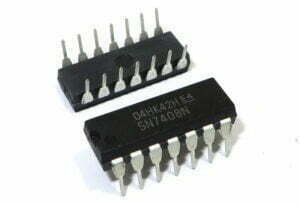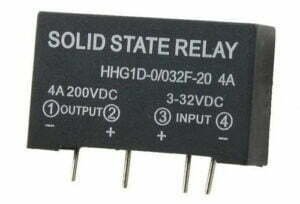Introduction to CRC
Cyclic Redundancy Check (CRC) is a fundamental error-detection mechanism, used everywhere from Ethernet networks to ZIP files. This guide explores CRC’s core working principles, applications, its most common standards (CRC-8, CRC-16, CRC-32), and more.
Learn step-by-step calculations, get hands-on with code examples in Python/C/Java, and discover best practices for choosing the right CRC for your project. Whether you’re a developer troubleshooting data corruption or a tech enthusiast curious about error detection, this article breaks down complex concepts into actionable insights.
Why CRC Matters?
In digital communication, even minor data corruption can lead to critical failures. CRC provides a robust yet efficient way to verify data accuracy. Unlike simpler methods like parity checks, CRC detects a broader range of errors, including single-bit flips and burst errors. For instance, in a data storage system, a single bit error in a crucial file could render it unreadable or cause incorrect calculations. CRC acts as a safeguard, catching such errors before they lead to more significant issues.
CRC in Action
Imagine sending a file over the internet. CRC generates a unique checksum appended to the file. The receiver recalculates the checksum and compares it to the received value. If they match, the data is intact; if not, errors are flagged. For example, when downloading a software update, your device uses CRC to ensure the downloaded file is identical to the one on the server. If the CRC checksums don’t match, the download may be corrupted, and you’ll likely need to redownload it. This process ensures that the software you install is the correct and unaltered version, preventing potential malfunctions due to incorrect data.
How CRC Works?
Key Components
- Generator Polynomial: At the heart of CRC lies the generator polynomial, a predefined binary sequence. This polynomial serves as a divisor in the CRC calculation. For example, CRC-32, a widely used CRC standard, employs the hexadecimal value 0x04C11DB7 as its generator polynomial. The choice of the generator polynomial impacts the CRC’s error-detection capabilities. A well – designed polynomial can efficiently detect a wide range of common errors, including single-bit and multi-bit errors.
- Data Manipulation: The original data, whether it’s a file, a network packet, or any other digital information, is treated as a binary number in the CRC process. Before the actual calculation, the data is padded with zeros at the end. This padding is crucial as it allows for the proper division by the generator polynomial. The division operation used in CRC is modulo 2 arithmetic, which is different from the regular arithmetic we are accustomed to. In modulo 2 arithmetic, addition and subtraction are the same (equivalent to the XOR operation), and there is no carry or borrow. This simplifies the calculation process and makes it more suitable for digital hardware implementations.
Step-by-Step Calculation
- Append Zeros: The first step in calculating CRC is to append a certain number of zeros to the end of the original data. The number of zeros appended is equal to the degree of the generator polynomial. For instance, if the generator polynomial has a degree of 16 (as in CRC-16), 16 zeros are added to the data. This padded data is then used as the dividend in the subsequent division step.
- Modulo 2 Division: With the padded data in hand, we perform modulo 2 division by the generator polynomial. We start from the left – most bit of the padded data and perform a series of XOR operations with the generator polynomial. The process continues bit by bit until we have processed all the bits of the padded data. The result of this division is a remainder, which is the CRC value.
- Attach CRC: Once the CRC value (the remainder) is calculated, we replace the appended zeros in the original padded data with this CRC value. The data packet now consists of the original data followed by the CRC. This combined data is what is transmitted or stored. For example, if the original data was “10110” and after calculation the CRC is “110”, the final data packet would be “10110110”.
Error Detection
CRC Standards and Applications
Common CRC Variants
| Standard | Generator Polynomial | Use Case |
|---|---|---|
| CRC-8 | x⁸ + x² + x + 1 (0x07, reversed) | Small data blocks (e.g., IoT sensors, embedded systems) |
| CRC-16 | x¹⁶ + x¹⁵ + x² + 1 (0x8005, standard) | Industrial controls (Modbus, Profibus), serial communication |
| CRC-32 | x³² + x²⁶ + x²³ + x²² + x¹⁶ + x¹² + x¹¹ + x¹⁰ + x⁸ + x⁷ + x⁵ + x⁴ + x² + x + 1 (0x04C11DB7, Ethernet standard) | Networking (Ethernet, Wi-Fi), file systems (ZIP, FAT32), storage devices |
| CRC-64 | x⁶⁴ + x⁶³ + x⁵⁵ + x⁵⁴ + x⁵³ + x⁵² + x⁴⁷ + x⁴⁶ + x⁴⁵ + x⁴⁰ + x³⁹ + x³⁸ + x³⁵ + x³³ + x³² + x³¹ + x²⁹ + x²⁷ + x²⁶ + x²⁵ + x²² + x²¹ + x²⁰ + x¹⁹ + x¹⁸ + x¹⁷ + x¹⁶ + x¹⁴ + x¹³ + x¹¹ + x⁹ + x⁸ + x⁷ + x⁶ + x⁴ + x³ + x + 1 (0x0000000000000001, ECMA-182 standard) | High-reliability systems (storage arrays, database checksums) |
Real-World Uses
- Network Protocols:
In Ethernet, CRC is an integral part of the data – link layer. Each Ethernet frame has a CRC field at the end. When a network device sends an Ethernet frame, it calculates the CRC of the frame’s data and header and inserts the CRC value into the frame. The receiving device then recalculates the CRC for the received frame. If the calculated CRC does not match the CRC in the frame, the receiving device discards the frame, signaling a transmission error. Wi – Fi and Bluetooth also rely on CRC for packet validation. In a Wi – Fi network, the access point and client devices use CRC to ensure that the data packets sent over the wireless medium are error – free. This is crucial for maintaining a stable and reliable wireless connection, especially in applications like video streaming or online gaming, where data integrity is essential for a seamless user experience. - Storage Devices:
Hard Disk Drives (HDDs), Solid – State Drives (SSDs), and USB drives use CRC to safeguard data. When data is written to these storage devices, a CRC value is calculated and stored along with the data. During a read operation, the device recalculates the CRC of the read data and compares it with the stored CRC. If there is a mismatch, the device may attempt to read the data again or flag an error. For example, if you save a critical business document on a USB drive, the drive uses CRC to ensure that the document can be read back accurately later. In the case of HDDs, CRC helps protect against errors that may occur due to magnetic interference or mechanical issues.
- File Integrity:
Torrent clients use CRC checksums to verify the integrity of downloaded files. When you download a file using a torrent client, the client calculates the CRC of the downloaded parts of the file and compares it with the pre – calculated CRC provided by the torrent tracker. This ensures that the file you download is identical to the original file shared by the uploader. Firmware updates also rely on CRC. When a device, such as a router or a smartphone, receives a firmware update, it uses CRC to confirm that the update file has been downloaded correctly. If the CRC check fails, the device may not install the firmware update, preventing potential issues that could arise from a corrupted update. Similarly, ensuring data integrity is crucial when copying a program from a microcontroller for backup or analysis.
Implementing CRC: Code and Tools
CRC Calculation in Python
import binascii
def calculate_crc32(data):
return binascii.crc32(data.encode()) & 0xffffffff
# Example usage
data = "Hello, world!"
crc32_value = calculate_crc32(data)
print(f"CRC32 checksum: {crc32_value}")
In this code:
- First, we import the binascii library, which provides functions for converting between binary data and various ASCII-encoded binary representations. The crc32 function within this library is used to calculate the CRC-32 value of a given data stream.
- The calculate_crc32 function takes a string of data as input. It first encodes the data into bytes (since the crc32 function in binascii expects bytes as input). Then, it calculates the CRC-32 value. The result is then masked with 0xffffffff to ensure that the value is a non-negative 32-bit integer. This masking is necessary because the crc32 function in Python returns a signed integer, and we want to work with the unsigned 32-bit representation commonly used in CRC-32.
- For the example usage, we define a simple string “Hello, world!” and calculate its CRC-32 value. Finally, we print out the calculated CRC-32 value.
import crcmod
# Create a CRC-16-Modbus object
crc16 = crcmod.predefined.Crc('modbus')
# Calculate the CRC for a message
message = b'\x01\x03\x00\x00\x00\x02'
crc = crc16.calculate(message)
# Print the CRC value
print(f"CRC: {crc}")
In this code:
- We first import the crcmod library.
- Then, we create a Crc object for the CRC-16-Modbus standard. The predefined.Crc(‘modbus’) call initializes the object with the parameters specific to the CRC-16-Modbus standard, such as the correct generator polynomial, initial value, and XOR-out value.
- Next, we define a sample message as a byte string—this could represent a Modbus RTU message, for example.
- We use the calculate method of the crc16 object to calculate the CRC-16 value for the message.
- Finally, we print out the calculated CRC-16 value.
Tools for CRC Verification
Online Calculators
- Navigate to the website.
- In the input field, enter the data for which you want to calculate the CRC. For example, if you want to calculate the CRC for a text string “test”, you can enter it in the text input area.
- Select the appropriate CRC standard from the dropdown menu. Let’s say you choose CRC – 32.
- Click the “Calculate” button. The website will then display the calculated CRC value. This is extremely useful for quickly verifying the CRC of small data samples during development or when you need a quick check without setting up a programming environment. For example, when testing a new data – transfer protocol implementation in a development environment, you can use this online calculator to quickly check if your calculated CRC values match the expected ones for small test data packets.
Command - Line Tools
- Linux/macOS: In Linux and macOS, the crc32 command (part of the coreutils package, usually pre-installed) can be used to calculate the CRC-32 of a file. For example, to calculate the CRC-32 of a file named example.txt, you can run the following command in the terminal:
crc32 example.txt
- Windows: In Windows, the certUtil tool (a built-in command-line utility) can be used to calculate the CRC – 32 of a file. The command syntax is:
certUtil -hashfile example.txt CRC32
This will display the CRC-32 value of the “example.txt” file. Similar to the Linux/macOS crc32 command, it helps in quickly verifying file integrity.
For example, when you are managing a file server in a Windows-based network and need to ensure the integrity of files stored on the server, you can use certUtil to calculate the CRC – 32 values of files and compare them over time to detect any potential data corruption.
Best Practices and Common Pitfalls
Choosing the Right CRC
- Short vs. Long Checksums: When selecting a CRC, consider the trade – off between error – detection capabilities and overhead. Shorter CRCs, like CRC – 8, are faster to compute and have less overhead, making them suitable for applications where speed is crucial and the data size is small. For example, in a sensor network with limited bandwidth and processing power, CRC – 8 can be used to quickly verify the integrity of the small sensor readings. However, they have a lower probability of detecting complex errors. Longer CRCs, such as CRC – 64, offer better error – detection capabilities, including the ability to catch more complex multi – bit errors. But they require more computational resources and increase the data size due to the larger checksum. In a high – reliability storage system for critical data, CRC – 64 might be preferred to ensure data integrity over long – term storage or during high – speed data transfers where the risk of bit – level errors is higher.
- Generator Polynomial Selection: It is essential to use standardized generator polynomials. Standardized polynomials, like those used in well – known CRC standards (e.g., CRC – 32’s 0x04C11DB7), have been thoroughly tested and optimized for error – detection. Using non – standard polynomials can lead to compatibility issues. For instance, if two devices are communicating and one uses a custom – defined generator polynomial while the other expects a standard one, the receiver may not be able to correctly verify the CRC, resulting in data loss or misinterpretation. Standard polynomials also ensure that different implementations across various systems can interoperate smoothly. In a large – scale network infrastructure with multiple vendors’ devices, using standard generator polynomials for CRC calculations ensures that all devices can accurately verify the integrity of the data packets they receive, regardless of the device’s origin.
Avoiding Common Mistakes
- Endianness: Endianness refers to the order in which bytes are stored or transmitted. Big – endian stores the most significant byte first, while little – endian stores the least significant byte first. During CRC calculations, inconsistent byte ordering can lead to incorrect results. For example, if a sender calculates the CRC using little – endian byte order and the receiver expects big – endian byte order, the calculated CRCs will not match, even if the data is otherwise correct. To avoid this, it is crucial to clearly define and use a consistent byte – ordering convention throughout the system. In network programming, the network byte order (big – endian) is commonly used to ensure compatibility between different devices. When implementing CRC calculations in network – related applications, developers must convert the data to the network byte order before calculating the CRC to ensure accurate error detection.
- Initialization Values: Some CRC implementations use non – zero initial values. For example, CRC – 32 often starts with an initial value of 0xFFFFFFFF. Using the wrong initial value will lead to incorrect CRC calculations. If a developer forgets to set the correct initial value for CRC – 32 and uses 0 instead, the calculated CRC will be completely different from the expected value. This can cause valid data to be flagged as corrupted or vice versa. It is vital to research and use the correct initial value specified for the chosen CRC standard. When implementing CRC algorithms in different programming languages, developers should refer to reliable documentation or libraries that adhere to the standard initial values for each CRC type to ensure accurate and consistent results.
Conclusion
- Flowchart of CRC Calculation: A flowchart can clearly illustrate the CRC calculation process. You can use tools like draw.io to create one. A suitable prompt for generating an image of a CRC calculation flowchart could be “A flowchart illustrating CRC steps: data input → append zeros → modulo 2 division → attach remainder → error check. Use modern flat design with blue and gray tones.” This would result in a clean and easy – to – understand visual representation of how CRC works, which can be very helpful for those new to the concept.
- Comparison Chart of CRC Standards: A bar chart comparing CRC – 8, CRC – 16, and CRC – 32 can provide a quick overview of their differences. For example, you can use Google Sheets to create such a chart. A good prompt for generating an image of this comparison could be “A bar chart comparing CRC – 8, CRC – 16, and CRC – 32 by error detection rate, checksum length, and typical use cases. Highlight CRC – 32’s dominance in networking.” This visual would make it easy to see at a glance which CRC standard is best suited for different scenarios based on key factors like error – detection capabilities and the length of the checksum.
FAQ
1. Can CRC correct errors, or only detect them?
2. How do I choose the right CRC standard for my application?
3. What are the limitations of CRC?
- Limited Error – Detection Capability: While CRC can detect a wide range of errors, there are still some types of errors it may miss. For example, if the errors in the data result in a new data sequence that, by chance, has the same CRC value as the original correct data, the errors will go undetected. This is known as a “false – negative” situation. Although the probability of this happening is relatively low, especially for well – designed CRC standards, it is still a theoretical limitation.
- No Error Correction: As mentioned earlier, CRC can only detect errors and not correct them. In some applications where data integrity is crucial, the inability to correct errors immediately can be a significant drawback. For instance, in real – time communication systems where re – transmission may not be feasible due to time constraints, the lack of error – correction ability of CRC can lead to data loss or degraded performance.





